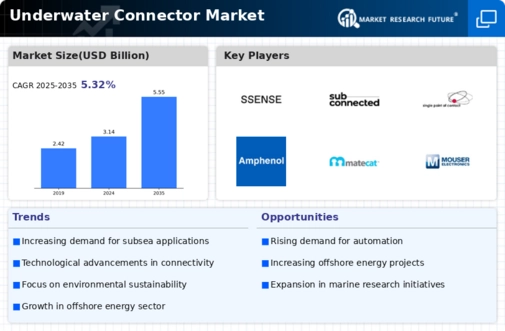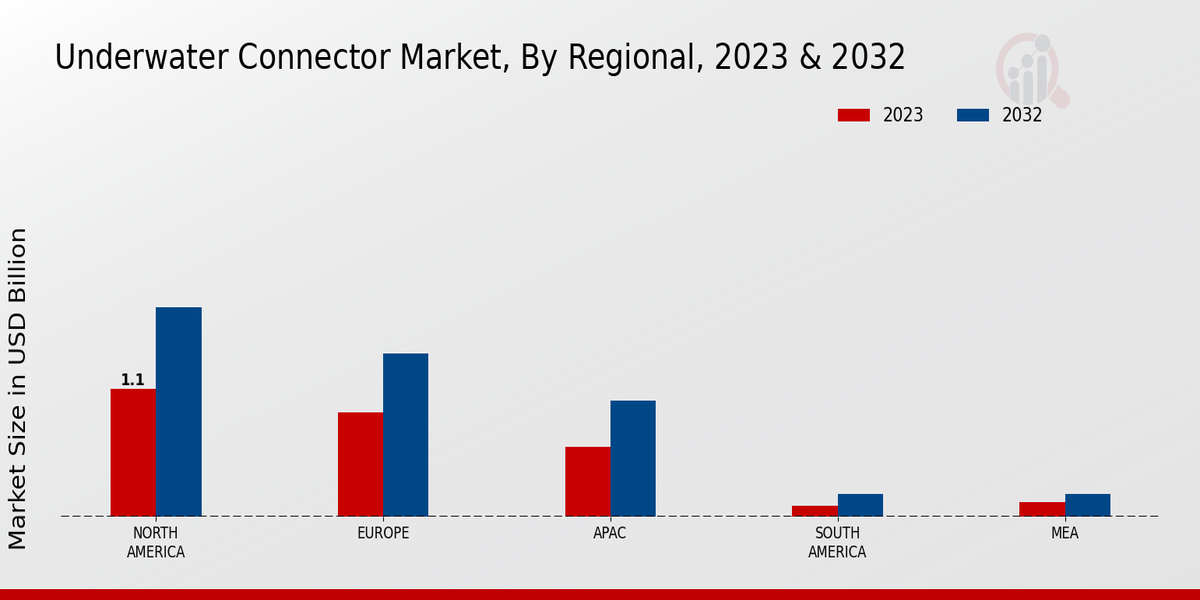Market Growth Projections
The Global Underwater Connector Market Industry is projected to experience substantial growth over the next decade. With an anticipated market value of 3.14 USD Billion in 2024, the industry is expected to reach 5.55 USD Billion by 2035, indicating a compound annual growth rate of 5.31% from 2025 to 2035. This growth is driven by various factors, including advancements in technology, increasing demand for renewable energy, and the expansion of marine infrastructure. The market's trajectory suggests a robust future, with numerous opportunities for innovation and investment across different sectors reliant on underwater connectivity.
Growing Exploration Activities
The Global Underwater Connector Market Industry is significantly influenced by the growing exploration activities in the marine sector. As industries such as oil and gas, marine research, and deep-sea mining expand their operations, the need for robust underwater connectors becomes increasingly critical. These connectors are essential for ensuring reliable communication and power supply to underwater equipment. For example, the oil and gas sector's exploration of deeper waters necessitates advanced connectors that can withstand high pressures and corrosive environments. This trend is likely to propel market growth, as companies seek to enhance their operational capabilities in challenging underwater conditions.
Expansion of Marine Infrastructure
The expansion of marine infrastructure is a significant driver for the Global Underwater Connector Market Industry. Governments and private entities are investing heavily in the development of ports, underwater pipelines, and communication networks. This expansion necessitates the use of specialized underwater connectors to ensure seamless connectivity and operational efficiency. For instance, the construction of new underwater cable systems for global telecommunications is expected to increase the demand for high-performance connectors. As marine infrastructure projects proliferate, the market is poised for substantial growth, aligning with the projected increase in market value from 3.14 USD Billion in 2024 to 5.55 USD Billion by 2035.
Rising Demand for Renewable Energy
The Global Underwater Connector Market Industry is experiencing a surge in demand driven by the increasing focus on renewable energy sources. As countries invest in offshore wind farms and underwater solar installations, the need for reliable underwater connectors becomes paramount. These connectors facilitate the transmission of electricity from underwater turbines to the grid, ensuring efficiency and safety. For instance, the global offshore wind capacity is expected to grow significantly, leading to a projected market value of 3.14 USD Billion in 2024. This trend indicates a robust growth trajectory, with the market anticipated to reach 5.55 USD Billion by 2035, reflecting a compound annual growth rate of 5.31% from 2025 to 2035.
Advancements in Underwater Technology
Technological advancements play a crucial role in the evolution of the Global Underwater Connector Market Industry. Innovations in materials and design have led to the development of connectors that can withstand extreme underwater conditions, enhancing their reliability and longevity. For example, the introduction of corrosion-resistant materials and improved sealing technologies has expanded the application range of underwater connectors in various sectors, including telecommunications and marine exploration. As these technologies continue to evolve, they are likely to drive market growth, as industries increasingly adopt advanced underwater solutions to meet their operational needs.
Environmental Regulations and Standards
Environmental regulations and standards are shaping the Global Underwater Connector Market Industry by necessitating the adoption of eco-friendly technologies. Governments worldwide are implementing stringent regulations to minimize environmental impact, particularly in marine operations. This has led to a demand for connectors that not only meet performance standards but also adhere to environmental guidelines. Companies are increasingly focusing on developing sustainable underwater connectors that reduce ecological footprints. As these regulations become more prevalent, they are likely to drive innovation and growth within the market, as businesses strive to comply with new standards while maintaining operational efficiency.














